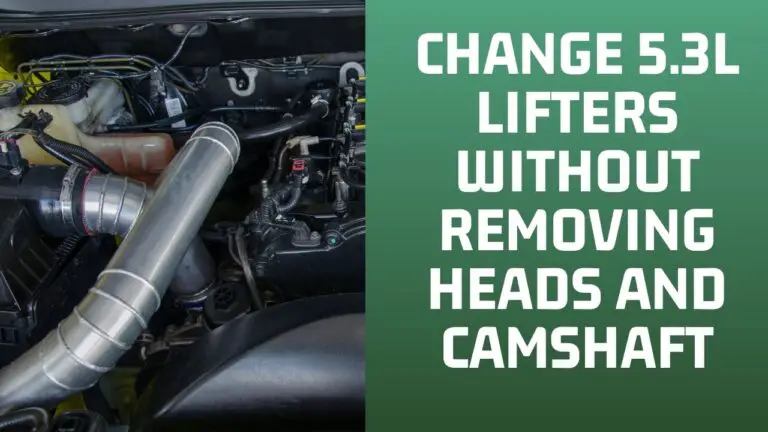There’s nothing worse than a heater core going out in the middle of fall. When the thermostat is raised, it is the core that provides warmth.
Keeping the defroster’s air heated allows it to maintain your windshield and overall view clear, depending on the outside weather conditions.
Sometimes, having a bad heater could likewise spell D.O.O.M, and this is why it is important to know the symptoms, and how to fix the issue.
The good news, as both signs and a DIY guide to fixing your bad heater core, is shared in this article!
Heater Core Symptoms
-
Formation of Fogs on Windscreen
If your car is covered in fog, there are two possibilities. In the first place, the heater core may be faulty and the defrosters aren’t operating. Another possibility is that the core is blowing fog or smoke into your car.
Both are warning indications that should be investigated as soon as possible.
-
Car Smells Like Candy.
You may not be bringing donuts to work, but your car may be filled with the pleasant scent of your favorite perfume. The heater core may be to blame. Vents in the cabin may begin to smell like coolant if the heater core is leaking.
The fragrance of coolant is both pleasant and musty at the same time. It has been described as having a sweet, fruity, or maple syrup fragrance by many.
-
There is a constant loss of engine coolant.
Another symptom that your core is failing is the loss of coolant. A coolant leak in the heater core is the most common source of this problem. In certain cases, topping off the coolant only results in a low level the following day.
Low coolant can cause overheating and engine damage, so it’s critical to get the leak fixed right away.
-
The Interior of the Cabin Is Chilly.
There are tubes in the heater core that circulate hot engine coolant through them before returning the coolant to the radiator. The hot coolant is warmed by the air before it is blown into your car’s vents.
Your core may be leaking hot coolant out of the tubes if the surrounding air is cold instead of hot.
-
A chilly cabin and a sweltering engine.
It’s the culmination of the previous two signals that your heater core is in trouble.
A coolant problem is likely to be traced back to the core if you’re getting cold air from the vents but your engine is overheating.
Because of a leak, either the engine or the coolant may be hungry.

What the Heater Core Does.
Heating the interior of the automobile with a heater core involves employing a small radiator to circulate hot coolant from the engine.
The cooling system’s hoses circulate coolant through the heater core in the same way that they circulate coolant through the engine and the huge cooling radiator behind the grille.
Heater Core Repair Advice
If the heater core is not flushed out and changed on a regular basis, the tubing that makes up the heater core can become blocked with dirt and other impurities that can be picked up by the coolant.
If this isn’t kept up, it will lose its effectiveness and finally stop operating altogether.
Electrolysis, a chemical reaction in which an electrical current flows through coolant and eats away at the heater core tubing, can also cause leaks.
Eventually, the heater core tube will leak. Even if the hole is only the size of a pinhead, it will cause the system to malfunction, and the damage will worsen with time.
ALSO SEE: How Much Does It Cost To Replace A Heater Core?
Can I Drive with a Heater Core Problem?
You can continue driving, but you shouldn’t for an extended period of time. When the engine’s coolant is used to cool the heater core, the temperature rises as a result of a defective heater core. Damage to the engine can occur if the problem is not addressed and the car is driven in this manner.
How often do Heater Cores need to be Replaced?
Heater cores, like any other automobile component, have a finite lifespan. If the coolant system is neglected, heater core breakdown can occur as early as 10 to 15 years after installation.
Clogged Heater Core Symptoms.
A faulty defroster or lack of warm air in the cabin will be apparent to you immediately. This is the first indication that something went wrong, and blockage isn’t the only culprit.
Is there something wrong with this? Take a look at these indications and see if any of them relate to your situation.
The following are some warning signals to keep an eye out for:
- There is little or no movement of air.
- Vents blow cold air rather than warm air when the heater is on.
- A coolant leak or a musty odor within the cabin
How can I decipher what these symbols mean? It is possible that the heater core fins are blocked and impeding airflow if the airflow is noticeably different. Visible coolant leakage inside the vehicle raises suspicions.
The coolant is leaking into the cabin because of a breach in the core. Heater cores are frequently found here. Although it may be necessary to replace it in order to get the system back up and running, it is possible to plug the leak.
The dangers of coolant leaking in the cabin are numerous, therefore it’s important to keep this in mind. It is dangerous to have liquid near or on the pedals since it might stimulate the growth of mold or rust, which will ruin the floor of your vehicle.
It’s possible that your automobile is slowly leaking coolant due to a leak. If your car’s coolant level drops, but you can’t find where the leak is coming from, it may be entering the cabin. Engine overheating can have a negative impact on a wide range of components in the system if coolant is lost.
Leaking Heater Core Symptoms.
-
The air in your car is fresh.
Vents may be emitting a sweet aroma. Coolant leaks are obvious when your automobile smells like radiator fluid, and this is a sure sign.
If you notice this wonderful smell coming from the outside of your automobile, it’s time to check the engine compartment to see how much coolant has leaked out.
-
Your car’s windshield is footed.
A classic symptom of a faulty heater core is a rapid buildup of fog in the interior of your vehicle. Note that we’re not looking for just a smattering of condensation on the windshield’s edge, but rather that every glass in the car is getting wet and sticky.
Coolant leaks into the vehicle’s interior, creating steam, which then condenses and condenses into fog.
-
There is cold air blowing into your car’s cabin.
All that heated air may escape too quickly from the heater ducts when there is a hole or rupture in the heater core. Your heater may blow warm, lukewarm, or extremely cold air depending on the size of the puncture.
-
Coolant is leaking out of your vehicle.
If your vehicle suddenly needs more coolant than usual and you can’t figure out why, you may have a faulty heater core. A puddle may form in your cabin instead of fog if you can’t discover the leak when the system is cold enough.
See if the floor on the passenger’s side is moist.
-
A Cold Cabin In Your Car, But A Hot Engine
The consequences of an overheated vehicle can be dire. Your car’s primary components will wear out and break down at an alarming rate if the temperature rises above a certain level.
Keep in mind that the heater core is only one possible source of overheating in your car.
If you find that your vehicle has overheated or continues to overheat, you should check the health of your heater core. If your heater stops working but your engine is still warm, you may have a coolant leak or another issue with your vehicle that has to be addressed.
Aside from checking the coolant hoses every 6,000 miles or six months, the heater core of your car requires little to no maintenance.
To keep your cooling system free of rust, follow the manufacturer’s instructions for changing your coolant/antifreeze. In addition, patching leaks and checking hoses for symptoms of internal collapse as soon as they are discovered will assist prevent a crisis from arising.
It’s best to have State Street Auto Repair help you determine when your cooling system needs to be serviced.
Leaky Heater Core Symptoms.
-
The air in your car is fresh.
Vents may be emitting a sweet aroma. Coolant leaks are obvious when your automobile smells like radiator fluid, and this is a sure sign. If you notice this wonderful smell coming from the outside of your automobile, it’s time to check the engine compartment to see how much coolant has leaked out.
-
Your car’s windshield is footed.
A classic symptom of a faulty heater core is a rapid buildup of fog in the interior of your vehicle. Note that we’re not looking for just a smattering of condensation on the windshield’s edge, but rather that every glass in the car is getting wet and sticky.
Coolant leaks into the vehicle’s interior, creating steam, which then condenses and condenses into fog.
-
There is cold air blowing into your car’s cabin.
All that heated air may escape too quickly from the heater ducts when there is a hole or rupture in the heater core. Your heater may blow warm, lukewarm, or extremely cold air depending on the size of the puncture.
-
Coolant is leaking out of your vehicle.
If your vehicle suddenly needs more coolant than usual and you can’t figure out why, you may have a faulty heater core. A puddle may form in your cabin instead of fog if you can’t discover the leak when the system is cold enough.
See if the floor on the passenger’s side is moist.
-
A Cold Cabin In Your Car, But A Hot Engine
The consequences of an overheated vehicle can be dire. Your car’s primary components will wear out and break down at an alarming rate if the temperature rises above a certain level. Keep in mind that the heater core is only one possible source of overheating in your car.
If you find that your vehicle has overheated or continues to overheat, you should check the health of your heater core. If your heater stops working but your engine is still warm, you may have a coolant leak or another issue with your vehicle that has to be addressed.
Aside from checking the coolant hoses every 6,000 miles or six months, the heater core of your car requires little to no maintenance.
To keep your cooling system free of rust, follow the manufacturer’s instructions for changing your coolant/antifreeze. In addition, patching leaks and checking hoses for symptoms of internal collapse as soon as they are discovered will assist prevent a crisis from arising.
It’s best to have State Street Auto Repair help you determine when your cooling system needs to be serviced.
Air In Heater Core Symptoms
An obstruction in the heater core of your car is likely to cause several problems for you and your passengers. Some symptoms are more common than others in most cases of a failure like this, but they can vary greatly from person to person.
Clogged heater cores can cause a variety of problems, including the following.
-
No Heat
Clogged heater cores are the most common cause of a lack of heat. The heating effectiveness of a vehicle’s heater core is significantly reduced when coolant is unable to circulate through the core.
As a result, commuters can expect a chilly ride, with little relief from their stuttering heating system.
-
Sub-Par Heat in Extreme Cold
During milder spells of cold, your car’s heat may be enough, but when the temperatures plummet, it’s no match. This is an indication of a heater core that is partially clogged.
The system’s overall heating capacity is greatly reduced even when enough warm coolant is allowed to flow. A thorough flush is often all that is needed to get a system back up and running.
-
Overheating is a possibility.
Overheating is rarely caused by a blocked heater core. Engine overheating may occur if further problems are present.
If you have a broken water pump or a partially clogged radiator, you may notice that the cooling system’s efficiency has already been reduced.
E46 Heater Core Symptoms.
The symptoms and consequences in the cabin might vary widely depending on how your heater core fails, from being icy cold to blazing hot.
Foggy windows that appear out of nowhere can be an indication that your heater core has failed.
In the event that your heater core has broken down, this is the most evident indicator. It’s possible that the heater core has sprung a leak as a result of this.
If this is the case, coolant vapor may be released into the interior of your car.
-
It has a sickeningly sweet scent.
A bad heater core is typically accompanied by this smell. Your radiator fluid is leaking if the coolant smells.
Passenger floorboard coolant seeping, and/or an oily-looking mist coming from the windshield, are possible side effects of this.
-
Coolant is a never-ending problem.
There’s a problem with your heat exchange system if you see this. But even though it may not be conclusive, the absence of leaking radiator fluid can inform you where to seek for the problem.
If you can’t discover a leak, it’s probably because the coolant is dripping into your cabin when the heating system is running. If your passenger side’s floor is moist, this is a possible cause.
-
In the cabin, there is either no heat or excessive heat.
As a last warning indication, this indicates that your heater core has failed. When this occurs in conjunction with any of the other symptoms, it’s a safe bet that something in the heater core has malfunctioned.
Your heater core may have a hole in it, enabling warm air to escape before it reaches the cabin, resulting in a cold cabin. Another possibility for an overheated vehicle is a faulty heater core.
An overheated engine needs to be inspected quickly by a competent mechanic since high heat in an engine is a recipe for disaster.
Heater Core Symptoms Overheating.
Overheating can result from the loss of coolant in a leaking heater core. It is conceivable for a heater core to become clogged enough to cause overheating, even though this is less typical.
BMW E90 Heater Core Symptoms.
The symptoms and consequences in the cabin might vary widely depending on how your heater core fails, from being icy cold to blazing hot. Signs of a faulty heater core include the following:
- Suddenly and without notice, the windows begin to become cloudy.
- It has a sickeningly sweet scent.
- Coolant is a never-ending problem.
- In the cabin, there is either no heat or excessive heat.
Jeep XJ Bad Heater Core Symptoms.
- Overheating
A leaky heater core can cause an engine to overheat. It’s possible that a car overheats for a variety of causes. To begin with, if you notice that your vehicle is overheating, you don’t need to worry about the heater core. If the coolant reservoir isn’t full, start looking for a leak.
Take a look at the thermostat first if it’s full and overheating.
-
Window Panes that are smeary
A faulty heater core is evident in the presence of foggy windows. When the heater core is leaking, it acts as a humidifier when it is turned on.
Fog isn’t caused by water; rather, antifreeze is to blame.
If antifreeze is ingested, it can be lethal. It’s also not a good idea to breathe in the vapor.
What Leads To A Clogged Heater Core?
Several factors can result in a blocked heater core. Even though the underlying causes for each of these problems are distinct, the end result is the same: the heater core must be brought back to peak efficiency.
A heater core leak can occur for a variety of reasons, some of which are listed below.
-
Rust/Scale Deposition
It is particularly damaging to a vehicle’s cooling system if corrosion occurs in any form. As a result of rust and scale buildup, the heat exchangers in this system are particularly vulnerable to malfunctions.
In addition, this includes the heater core, which is notorious for being clogged up. Water in a vehicle’s cooling system can lead to rust and scale buildup of this type.
-
Mixing of oil and water
Sludge is formed when oil and coolant interact. It swiftly spreads throughout a vehicle’s whole cooling system, including the heater core, causing it to overheat.
Due to the density of this sludge, it typically clogs the heater core, resulting in a slow or complete loss of coolant flow. Oil/coolant mixing is almost always the result of a blown gasket.
-
Another option for leaks is using a stop-leak product
In order to halt cooling system leaks, many car owners utilize a variety of different stop leak products. These products, on the other hand, tend to clog the heating core of a vehicle.
Such products are especially dangerous if they are used in excess. Products that claim to stop leaks might also block the radiator in a similar way.






![[CAUSES + FIX] Noise When Turning Steering Wheel While Stationary](https://shockabsorberpro.com/wp-content/uploads/2023/08/Noise-When-Turning-Steering-Wheel-While-Stationary-768x432.jpg)
